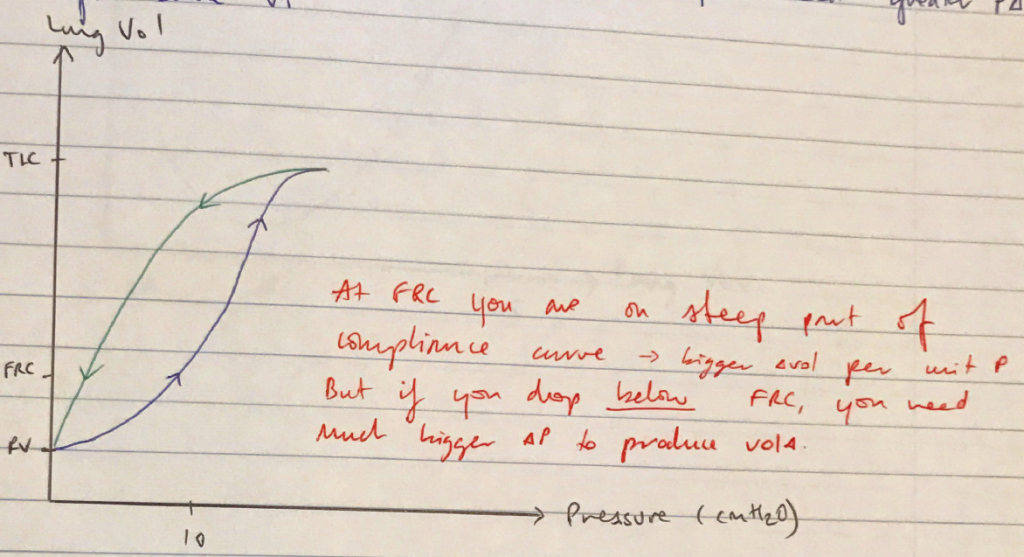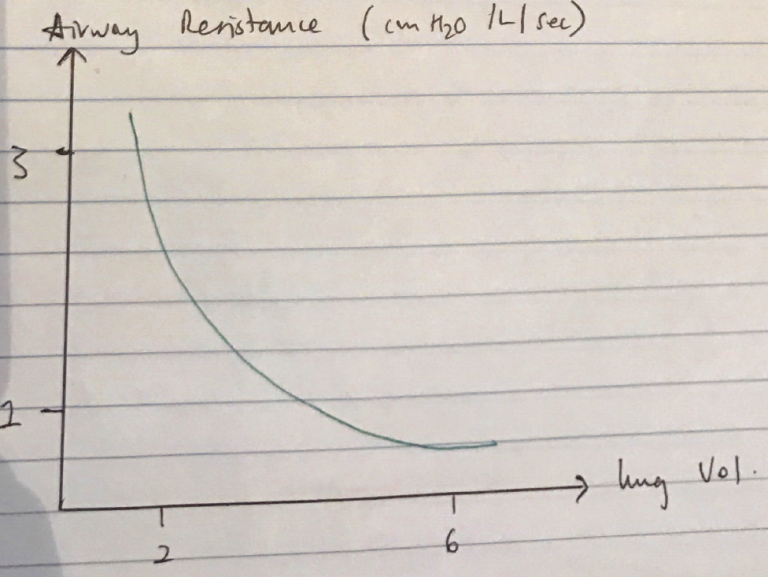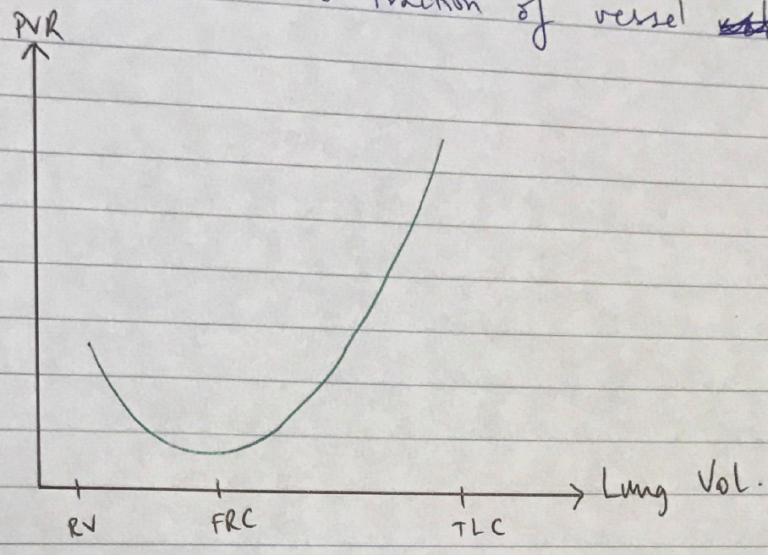F4iii / 17A08: Decreasing FRC
17A08: Exam Report
Describe the physiological consequences of decreasing the functional residual capacity (FRC) in an adult by 1 litre.
70% of candidates passed this question.
High scoring answers began with a definition and normal values, followed by a detailed list of the consequences of decreasing the FRC.
Some candidates included descriptions of the normal function of FRC, conditions that decrease FRC and ways of improving reduced FRC. These were not required and did not attract marks. Diagrams require correctly labelled axes, values & units.
F4iii / 17A08: Describe the physiological consequences of decreasing FRC by 1L in an adult
Definition – FRC = volume left in the lungs at the end of VT
FRC = ERV + RV
Essentially an equilibrium point b/w the tendency of chest/diaphragm to spring outwards & lungs to collapse inwards
= 30mL/kg
- ∴70kg adult x 30mL/kg = 2.1L
- ∴↓FRC 1L ~50% which is quite significant!
Effects of ↓FRC 1L
1. ↓O2 Store
- Effect of pre-O2 is less, because overall volume available to oxygenate is less
- ↑risk hypoxaemia on induction
2. ↓PaO2 Buffering
- ↑breath-to-breath variation in PaO2
3. ↓V/Q Mismatch
- Due to dynamic airways closure → gas trapping → atelectasis → ↑shunt → ↓PaO2
4. ↑WoB = ↑Compliance Work + ↑Resistance Wax
- FRC will fall below closing capacity (lung volume at which airways close)
- Traps gas in closed airways → ↑P required to open airways
- At lower lung volumes → you need greater P ∆ for same VT
- At low lung volume → less traction on airways
- ↑Resistance work to overcome airway R
- Author: Krisoula Zahariou


